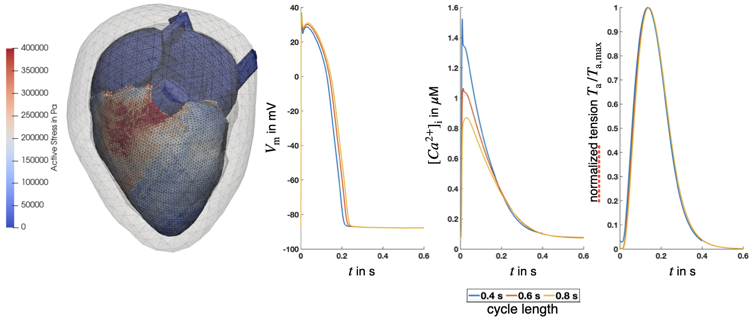Effect of Increased Heart Rate on Active Tension Development
- Forschungsthema:Computational cardiac modeling
- Typ:Bachelorarbeit
- Betreuung:
- Bearbeitung:
Motivation
Cardiac diseases are the number one cause of death in Germany. Computational modeling of the cardiovascular system can help to understand the relevant mechanisms and help to tailor treatments for heart diseases. The human heart is able to handle a wide range of different heart rates on a day-to-day basis going from a resting heart rate as low as 30 bpm for endurance athletes up to 200 bpm during exercise. Increased heart rates of more than 100 bpm can also be the result of cardiac diseases like tachycardia. In order to study those diseases our model needs to be able to account for increased heart rates. One main problem with the current implementation of the model is the fact that the duration of active tension (= the contractile forces) development does not change for different heart rates. As active tension is related to the intracellular calcium concentration of the myocytes, the idea is to tackle this problem by first modeling the effect of increased heart rates on the action potential duration (APD) then on the intracellular calcium concentration and then finally on the active tension development.Student Project
At the beginning, a literature research on the effect of heart rates on ionic currents and in particular on the intracellular calcium transient needs to be conducted. Using the gathered knowledge, the student will expand the currently used ionic cell models to be able to account for those effects in single cell electrophysiology simulations. First, by only focusing on the change of the duration of the action potential, then by focusing on the calcium transient duration and finally focusing on the development of the active tension. If at the end there is still time for it and the single cell results are satisfactory, transferring those changes to whole heart simulations and investigating their effects would be the final step (only master’s thesis).Notes
- The thesis can be written in German or English
- Programming skills (C++, Matlab, python) welcome
- Basic knowledge about the physiology of the human heart


